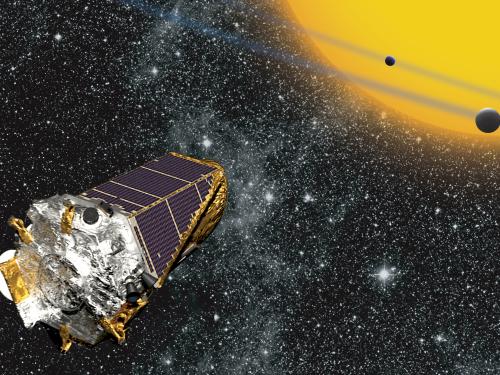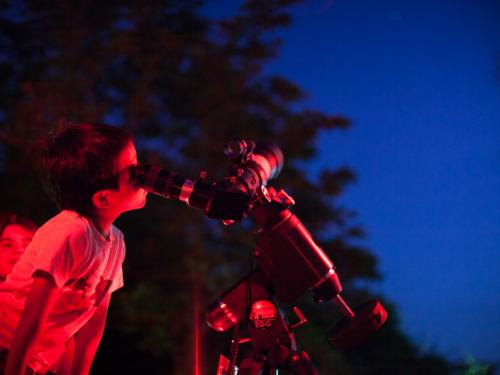
Stories of daring, stories of technological feats, stories of prevailing against the odds ... these are the stories we tell at the National Air and Space Museum. Dive in to the stories below to discover, learn, and be inspired.
Showing 81 - 90 of 156

April 01, 2018
As the Museum prepares for its upcoming transformation, the Smithsonian is eyeing a remake of its iconic film Scott Hamilton Skates the Universe.

March 13, 2018
The James Webb Space Telescope will not only give scientists a new, unprecedented view of the first galaxies.

January 30, 2018
Tomorrow's supermoon is actually being called a “super blue blood moon,” and it’s really rare. Here's what to look for.

January 03, 2018
If you looked up at the sky on January 1, you might have witnessed something spectacular--the Moon kicked off the year with the biggest full moon of 2018, a supermoon. But what about the Sun; did you know that it can be super, too?

November 30, 2017
Using satellites and robotic rovers, we’ve learned quite a few details about the various planets orbiting our Sun. But what about other stars? What are their planets like? How weird do they get? It turns out, pretty weird.

October 20, 2017
Hoping to catch a view of the Orionid meteor shower tonight? Here are the five things you need to know from the astronomy team at the Phoebe Waterman Haas Public Observatory.

October 16, 2017
For the first time ever, on August 17, 2017, astronomers detected the collision of two neutron stars. Not satisfied with that, they caught the cosmic smashup using both gravitational waves and light – another breakthrough.

August 17, 2017
Did you know that one day there will be no more solar eclipses?

August 17, 2017
If you can’t be in the path of totality for a solar eclipse, don’t lose heart! You can still see the eclipse from outside that limited region. The partial phases of the eclipse (when the Moon only partially blocks the Sun) will be visible over a huge area. Here are some reasons why your partial eclipse experience will be awesome.

August 15, 2017
On Monday, August 21, a total solar eclipse is sweeping the nation. All of North America will be able to see at least a partial eclipse, but 14 states across the U.S. will have the unique opportunity to see a total solar eclipse, called the path of totality. There are approximately 12.5 million people living in the path of totality—an occurrence that happens only once where you live every 375 years!
On the day of the eclipse, STEM in 30, a TV show we produce at the National Air and Space Museum for middle school students, will be broadcasting live from the path of totality in Liberty, Missouri, starting at 1:30 pm EST.